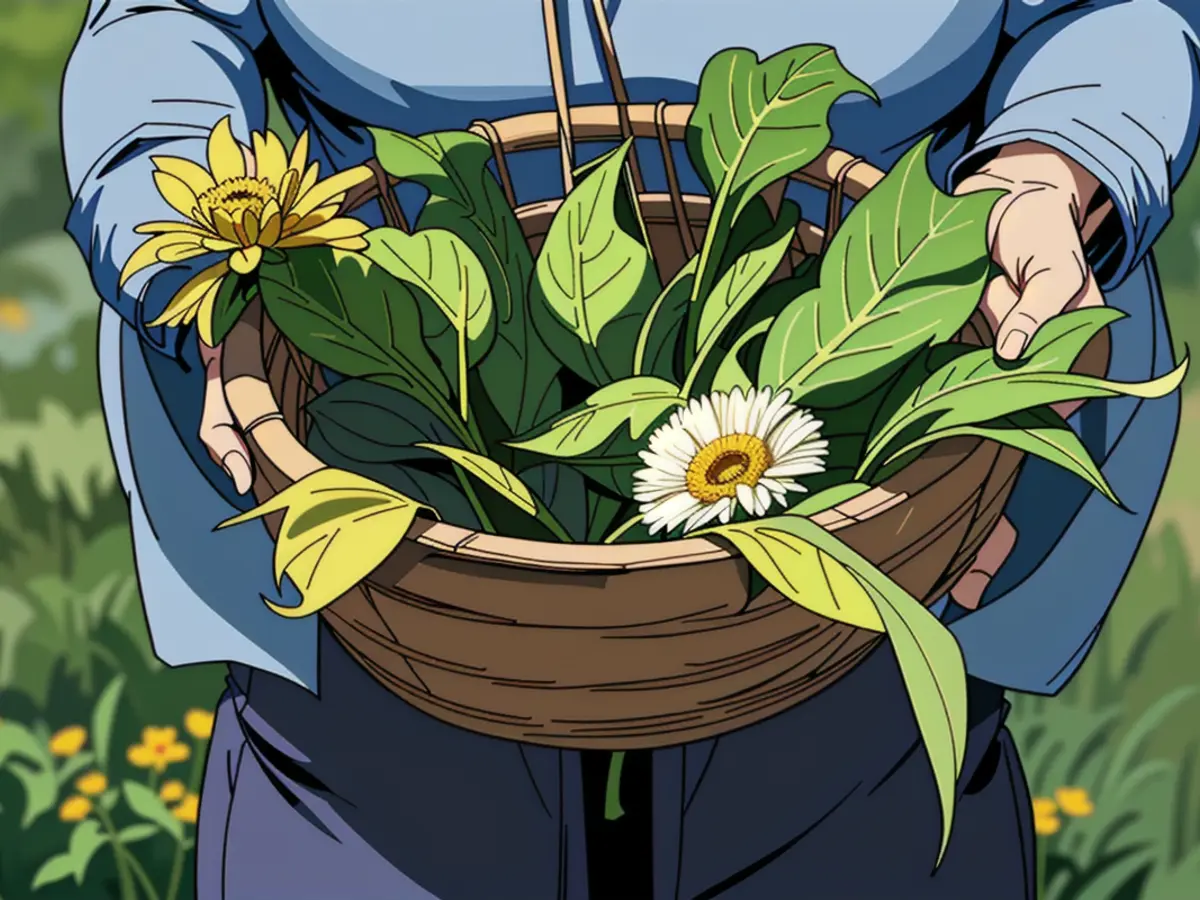Guide on Consuming Dandelions: Exploring Edible Roots and Blooms
Peer into your backyard or city park, and you may catch a glimpse of a culinary goldmine lurking amongst the greenery. Dandelions, the bright yellow flowers that seem to pop up everywhere, have a rich, underappreciated culinary history that extends far beyond their infamous status as a lawn pest. Yes, those same dandelions can be the star of a sumptuous multi-course feast, a nourishing tonic, or an exotic beverage that'll have you mistaken for a health-conscious bohemian.
All parts of this humble weed are edible and bursting with flavor, from the roots to the flowers. Below, we'll dive into the world of dandelion cookery, uncovering the tantalizing ways to savor each edible piece.
- Foragers, authors, and wild food enthusiasts like Samuel Thayer, Liz Knight, and John Kallas have made a lifelong passion out of exploring the gastronomic opportunities that dandelions present.
The Roots
Dandelions are year-round perennials and develop sturdy, meaty taproots laced with pro-biotic inulin as they grow. In tender, young dandelions, the slender root is a malleable parsnip-like vegetable, perfect for sautéing or roasting. However, older roots are "distinctly inferior" for eating, according to Samuel Thayer, so use them to create his coveted creation - dandelion coffee. A caffeine-free alternative to the usual brew, Thayer's dandelion coffee is purported to be a super-healthy drink but is still enjoyed for its palatable flavor alone.
The Crown and Heart

Springtime unveils a host of dandelion surprises when your lawn is carpeted with baby buds ready for harvest. These prized delicacies, when carefully lifted using a sharp pocket knife, garden trowel, or hori, offer a taste sensation like no other. First, trim away the older leaf stalks, leaving only the tender pale leaves and heart of the dandelion crown—now you're ready to enjoy this crisp treat raw or cooked.
With so many ways to enjoy your foraged fortune, you can add the dandelion crown to your favorite pad thai, noodle bowl, soup recipe, stir it into eggs, toss it with bacon in a warm salad, or even deep-fry it for a celebratory spring lunch. Be adventurous and drop them into a tempura batter for an unforgettable culinary experience.
The Leaves
Long derided as too bitter to eat, dandelion leaves are packed with valuable nutrients like calcium, Vitamins A and K, making them a welcomed addition to any post-winter diet. In some cultures, their bitterness is precisely what makes them so appealing. In the Mediterranean, Europe, and the Middle East, dandelion leaves are the star ingredients in a variety of pies, sauces, and soups.
The Flowers

When the flowers reign supreme, their bright petals pack a surprising vegetable punch. From adding them to savory egg yolk fillings for quiches and tarts, using them to garnish salads, or creating fritters for a scrumptious springtime indulgence, the possibilities are endless. You can even ferment the flowers to brew your dandelion wine or concoct a flavorful soda.
The Stems
Don't discard the hollow, tall stems! They make an excellent substitute for pricier puntarelle and can elevate your dishes with their sophisticated flavor profile. Rehydrate and curl these stems to create a tasty standalone dish or add them to a vibrant vinaigrette for a burst of flavor in your salads.
Unleash the secrets of the humble dandelion and revel in the joy of wild foraging. With these tips and tricks, you'll make the most of this remarkable plant's versatile offerings, all while reducing the mundane chore of weeding from your daily to-do list. So go ahead—embrace your inner forager, and let the dandelion reign supreme in your kitchen!
- Martha Stewart encourages foragers to tap the earth and pluck dandelion roots, not just for their health benefits, but for their distinct flavor that makes a great alternative to coffee in a caffeine-free brew.
- When the weather warms and lawns are carpeted with baby dandelions, razor-sharp tools like pocket knives, garden trowels, or hori are perfect for carefully lifting the tender pale leaves and heart of the dandelion crown, offering a crisp treat for salads or stir-fries.
- Discarding the hollow, tall dandelion stems would be a mistake, as they can be rehydrated and curled to elevate dishes with their sophisticated flavor profile, serving as an economical substitute for pricier puntarelle.
- In the culinary world, vegetables like dandelions are appreciated for their versatility, with their flowers being used to add a vegetable punch to dishes such as quiches, salads, and fritters.
- Long believed to be too bitter for eating, dandelion leaves are treasure troves of valuable nutrients like calcium, Vitamins A and K, making them a welcomed addition to dishes across various cultures, from pies and sauces to soups in the Mediterranean, Europe, and the Middle East.



